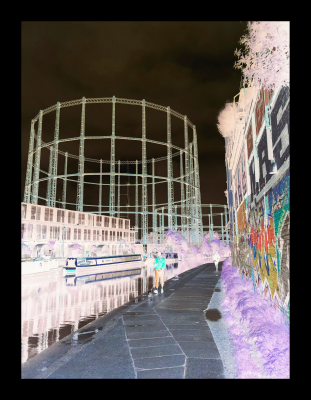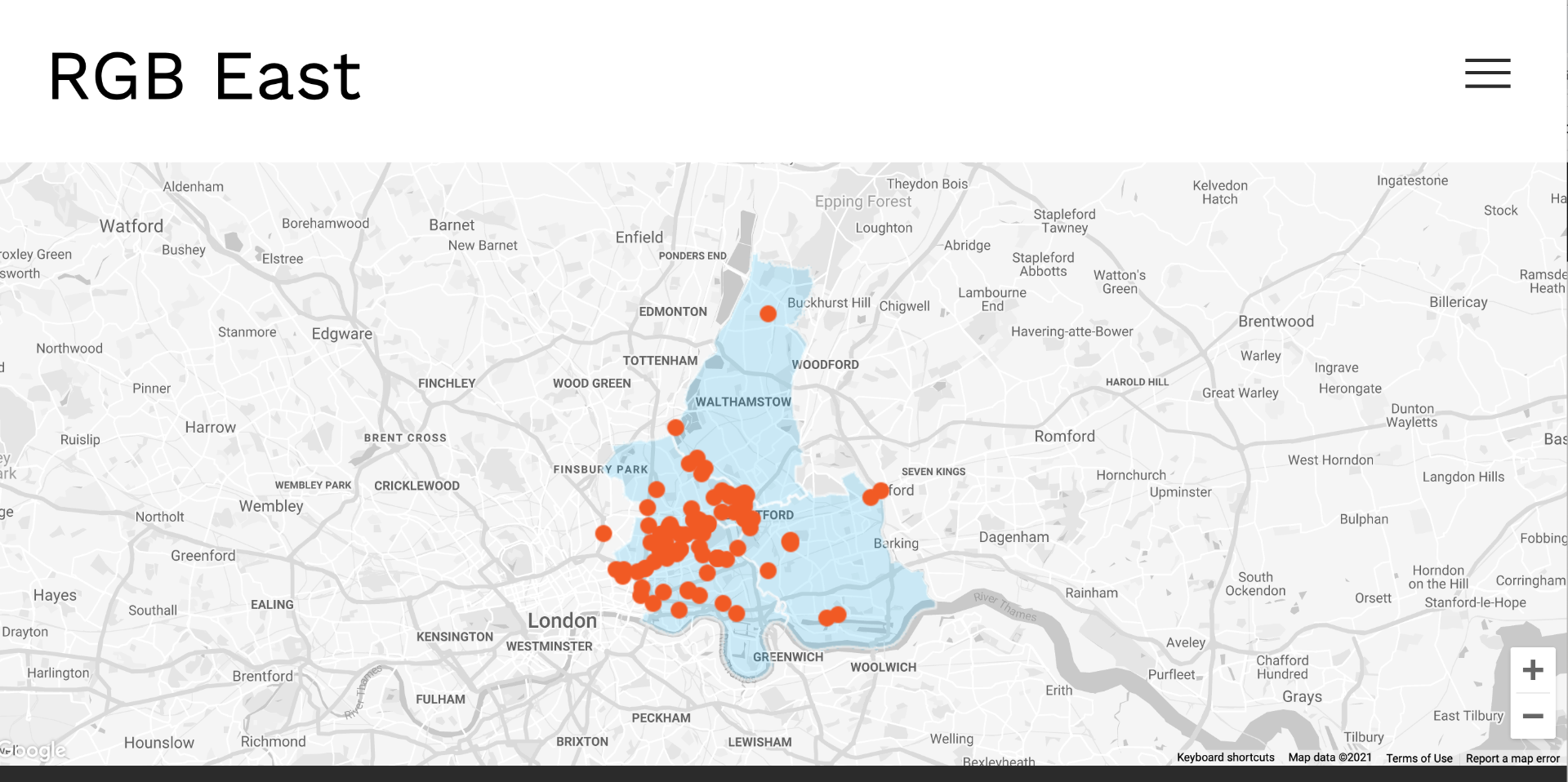RGB East – What Do We Talk About When We Talk About Engagement?
By Jordan Abankwah, on 1 December 2021
Jo Guile (Slade School of Fine Art and Artist), Emily Patterson (Institute of Ophthalmology), and partners Into Focus Project Team – Four Corners Film and Photography Centre, talk about how they navigated partnerships and different expectations of Public Engagement, and came out with a project that benefitted all.
Hello! It’s Jo speaking, here. Our partnership was originally facilitated by UCL’s Trellis Public Art programme. Emily and me met in person at a Trellis networking event in February 2020, Emily is a Postdoctoral researcher at the UCL Institute of Ophthalmology, with expertise in human colour vision and high-resolution imaging of the retina) and I’m an artist interested in the intangible nature of visual perception, its underlying mechanisms, and how these mechanisms can be manipulated to transform visual experience
Emily says “both of us had identified each other, from a long list of artists and scientists, as our respective work piqued each other’s interest. Although we did not cross paths during the evening’s activities, we sought each other out afterwards and enjoyed an enthusiastic conversation about light, colour and vision over a couple of pints. We even realised that we had attended the same art exhibition years before!”

Photography by Lena Nawrocka
Jo was already familiar with Four Corners’ Film and Photography Centre and their outreach programmes and community photographic project. Following Emily and Jo’s discussion about their joint fascination with human vision, perception, and experience, particularly in relation to colour, they approached Four Corners directors Dave Than and Sarah Ainsley to see if they were interested in working in partnership on a community-based arts-science photographic project.
Although Trellis Stage 1 funding facilitated a web site to support this project, Stage 2 funding was not secured. But Emily, Jo, Dave and Swere all committed to taking some of their initial ideas forward. We felt that we had only touched the tip of the iceberg and were keen to continue our collaboration and build upon our shared interests. So we decided to apply for a Beacon Bursary (UCL Culture) and were successful.
Our common interest was how our collective expertise could work in conjunction with the RGB East website, a platform to explore the connection between digital photography, perception and colour.
It gave an opportunity for Into Focus’s members with an interest in colour, vision and perception to deepen their knowledge of these concepts by marrying scientific knowledge and artistic skills. We co-devised a series of workshops to support this aspiration.
The first one explored the scientific basis of visual experience, examined the parallels between how a camera and the eye works and introduced the group to the RGB east web. It also looked at the photographs the group had added to the RGB east web page and gave a scientific explanation of how the illusion for each photograph worked.
The second one was based on a walk looking for colour in the landscape of Tower Hamlets to create the opposite colour from. And then the third workshop occurred in Four Corners Gallery and looked at block colour illusion films (made from photographs taken on then walk) and gathered responses to the illusions, including discussions on the group members’ differing responses to objects photographed when the colours were inverted and ‘where colour lives’ as the colours produced by the films were built in the mind rather than in the external world.

Photography by Fatima Ali
Through discussing the work with the group steadily over the program of workshops, we built a consensus that the negative images from the back end of the web page were of interest to all of us since they explored all the aims of our workshop program. These images, which were then converted into printed photographs, were shown in conjunction with video illusions made in one of the workshops from group members’ photographs. They gave an interactive element to the exhibition and, in the process, opened our themes to the wider East London community.
Dave and Sarah were extremely pleased with the high quality of the work exhibited and have been inspired by the workshop model website to diversify the teaching model with their next group(s). Some of the Into Focus group were very interested in the subjective nature of colour and how we experience it while others found the science of light and its connection to photography more interesting. A selection of their comments are:
“Thank you for sharing your knowledge. Stimulated by my knowledge gained i went to see the exhibition at Kew Gardens about ‘Structural Colour’ which was fascinating, and possibly wouldn’t have picked up on if i hadn’t been doing the RGBE programme.”
“I really enjoyed the introduction into how light reaches our eyes and that what we see may not be, relatively speaking, the truth but rather an interpretation. Furthermore walking around Tower Hamlets was a great experience to see the area and meet other people from different demographics.”
“I liked the questions the programme raised about perception/memory/ biology and how an individual can experience ‘reality’ through a multiplicity of filters …pointing to a uniqueness and the absurdity of standardisation.”
What we learnt from our experience of public engagement was firstly, to be very flexible especially during a difficult period of participant recruitment due to Covid19 restrictions. Secondly, to maintain a regular flow of communication between project partners and participants as well as being flexible with the time when workshops were run, the walk was held.

Photograph by Lena Nawrocka
We also learnt the importance of involving not only our project partners – Four Corners and Into Focus – but also our community participants in the design, delivery and assessment of the impact our project had on them. And furthermore the best way to maximise impact was to combine projects outcomes into a common exhibition. In our case, we present one of Into Focus’s black-and-white photographic exhibition alongside our RGB East photographic illusions. This not only provided a much richer and more diverse exhibition, but it also offered two ways to attract interest in the local community.
 Close
Close



